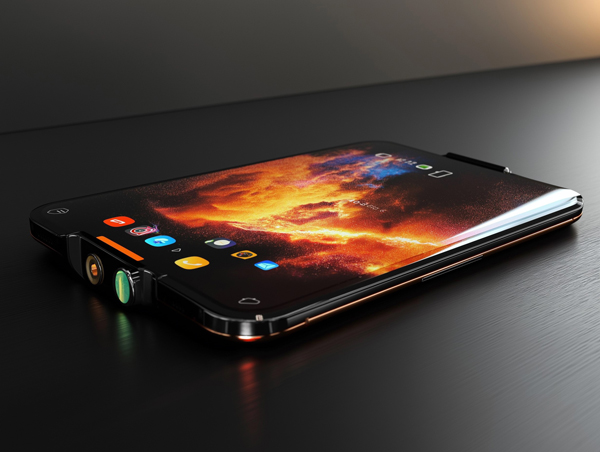Introduction
Smartphone technology has evolved significantly over the past two decades, with advancements in display quality, processing power, and camera technology shaping the way we use our devices. But one of the most revolutionary innovations in recent years is the foldable phone.
Once considered a futuristic concept, foldable phones are now a reality, with major manufacturers like Samsung, Google, Motorola, and Huawei leading the way. These devices offer a unique combination of compact portability and expansive screen real estate, aiming to redefine the smartphone experience. But are foldable phones just a passing trend, or do they represent the future of mobile technology? Let’s explore their rise, advantages, challenges, and what lies ahead.
The Evolution of Foldable Phones
The idea of a foldable phone has been around for years, but it wasn’t until 2019 that Samsung introduced the first commercially available foldable smartphone—the Samsung Galaxy Fold. While the launch had its share of technical issues, it marked the beginning of a new era in mobile devices.
Since then, we’ve seen several iterations of foldable designs:
•Book-Style Foldables – Devices like the Samsung Galaxy Z Fold and Google Pixel Fold open like a book, transforming from a standard-sized smartphone into a mini-tablet.
•Clamshell Foldables – Phones like the Samsung Galaxy Z Flip and Motorola Razr fold into a compact square, making them easy to carry while maintaining a large screen when opened.
•Rollable & Expandable Concepts – Companies like Oppo, LG, and TCL have showcased prototypes of rollable displays that extend dynamically.
These designs have pushed the boundaries of engineering and display technology, creating devices that bridge the gap between smartphones and tablets.
Why Are Foldable Phones Gaining Popularity?
The growing adoption of foldable phones can be attributed to several factors:
1. Larger Screens Without Sacrificing Portability
One of the biggest advantages of foldable phones is their ability to offer a larger display while remaining compact when folded. This appeals to professionals, gamers, and content consumers who want more screen space without carrying a bulky tablet.
2. Multitasking Capabilities
Foldables enhance productivity by allowing users to run multiple apps simultaneously. Samsung’s Galaxy Z Fold series, for example, features split-screen multitasking, letting users work on documents, browse the web, and chat simultaneously.
3. More Durable Than Before
Early foldables suffered from durability concerns, but manufacturers have improved hinge mechanisms and display materials. The latest models use Ultra-Thin Glass (UTG), making them stronger and more resistant to scratches.
4. Aesthetic Appeal & Unique Design
Foldable phones stand out. Whether it’s the nostalgic flip phone revival or the sleek book-style design, they cater to users who want a premium, cutting-edge device that feels different from traditional slab phones.

5. Innovation Drives Competition
As foldables grow in popularity, more brands are investing in research and development. Apple is rumored to be working on a foldable iPhone, which could bring mainstream adoption to an entirely new level.
Challenges Holding Foldable Phones Back
Despite their promise, foldable phones are not without drawbacks.
1. High Price Tags
Foldable phones are among the most expensive smartphones on the market. The Samsung Galaxy Z Fold 5 starts at $1,800, significantly more than traditional flagship phones. Prices need to decrease for mainstream adoption.
2. Durability & Longevity Concerns
Even with improvements, foldables still face durability challenges. Hinge mechanisms can wear out over time, and foldable displays are more prone to creases and damage compared to traditional glass screens.
3. App Optimization Issues
Many apps are not fully optimized for foldable screens, leading to inconsistent user experiences. Developers need to create software that takes full advantage of foldable form factors.
4. Battery Life
Larger, high-refresh-rate displays require more power, and foldable phones often struggle to maintain the same battery efficiency as traditional smartphones.
Are Foldable Phones the Future of Mobile Tech?
While foldable phones are still in their early stages, their increasing popularity and ongoing technological improvements suggest they have a promising future. However, their long-term success will depend on several factors:
•Lower Prices & Accessibility – As production costs decrease, foldables will become more affordable.
•Improved Durability – Future models will likely feature more resilient hinges, scratch-resistant glass, and better water resistance.
•Better Software Support – Developers need to optimize apps for foldable displays and multi-screen functionality.
•Consumer Demand & Competition – If brands like Apple enter the foldable market, mass adoption could accelerate significantly.
Conclusion
Foldable phones represent a significant step forward in mobile technology, offering innovative designs that merge portability with functionality. While current limitations like durability and pricing remain barriers, ongoing advancements are addressing these concerns.
Are foldable phones the future? Not quite yet, but they are certainly shaping the next evolution of smartphones. With more competition, lower prices, and enhanced technology, foldable devices could soon become the new industry standard. For now, they remain a premium innovation, but in a few years, they might be as common as today’s flagship smartphones.
The Rise of Foldable Phones: Are They the Future of Mobile Tech?
857



